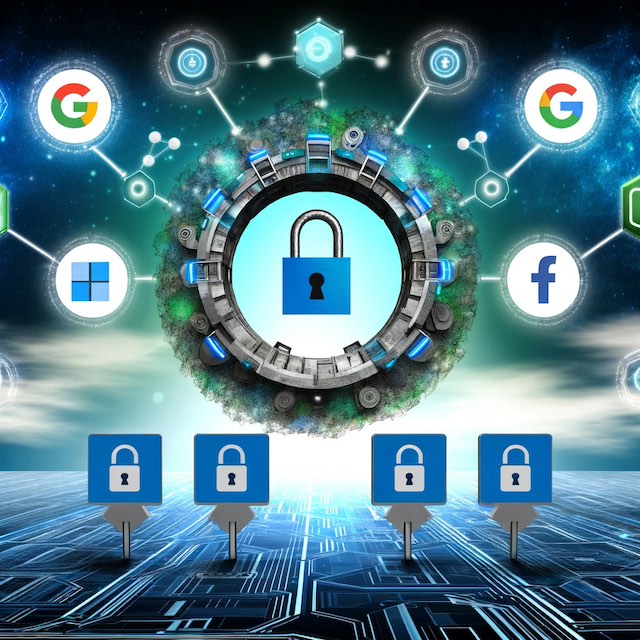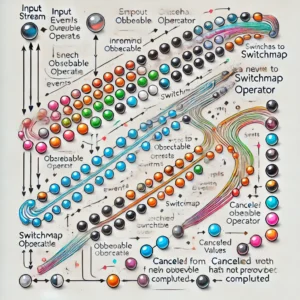As technology continues to evolve, the importance of robust identity and authorization management in modern applications cannot be overstated. In today’s digital landscape, where data privacy and security are paramount concerns, ensuring that the right individuals have access to the right resources is essential. This is where OpenID Connect and OAuth 2.0 emerge as the dynamic duo, offering sophisticated protocols to achieve secure identity and authorization.
I. Introduction
A. Brief Overview of the Importance of Identity and Authorization in Modern Applications
In the ever-expanding digital realm, the management of user identity and authorization serves as the foundation of secure and efficient application development. Identity ensures that users are accurately recognized and authenticated, while authorization controls their access to sensitive resources within the application. This combination not only safeguards data but also enhances user experience by providing seamless access to relevant functionalities.
B. Introduction to OpenID Connect and OAuth 2.0 as Key Protocols in Achieving Secure Identity and Authorization
At the core of modern identity and authorization management lie OpenID Connect and OAuth 2.0. While OAuth 2.0 primarily focuses on authorization, OpenID Connect extends its capabilities to include identity management. Together, they form a robust framework that empowers developers to implement secure authentication, authorization, and user management functionalities within their applications.
II. Understanding OAuth 2.0
A. Definition and Purpose of OAuth 2.0
OAuth 2.0 stands as an industry-standard protocol designed to facilitate secure access delegation. Its primary purpose is to enable applications to access user data without requiring direct access to user credentials. Instead, OAuth 2.0 facilitates the issuance of access tokens, allowing applications to interact with protected resources on behalf of users.
B. Key Components and Roles in OAuth 2.0
- Authorization Server: The component responsible for authenticating users and issuing access tokens.
- Resource Server: Hosts protected resources that clients seek access to.
- Client: Represents the application requesting access to user resources.
- Resource Owner: The user who owns the protected resources and grants access to them.
C. OAuth 2.0 Flows
OAuth 2.0 flow is designed to meet specific use cases and requirements, ranging from browser-based applications to machine-to-machine communication. By understanding these flows, developers can choose the most suitable approach for their application’s authentication and authorization needs. Here is the list of OAuth 2.0 flows.
- Authorization Code Flow: Involves the exchange of an authorization code for an access token and is suitable for server-side applications.
- Implicit Flow: A simplified flow suitable for browser-based or mobile applications, where the access token is returned directly to the client.
- Client Credentials Flow: Enables direct communication between the client and authorization server, commonly used for machine-to-machine communication.
- Resource Owner Password Credentials Flow: Allows the client to exchange the user’s credentials for an access token, suitable for trusted clients.
III. Introduction to OpenID Connect (OIDC)
A. Evolution from OAuth 2.0 to OpenID Connect
Building upon OAuth 2.0, OpenID Connect introduces additional features to support user authentication and identity management. It enhances OAuth 2.0 by providing standardized mechanisms for verifying user identity and retrieving user information.
B. Key Components and Roles in OpenID Connect
- ID Token: A JSON Web Token (JWT) containing user identity information issued by the authorization server.
- UserInfo Endpoint: An API endpoint for retrieving additional user information beyond what is provided in the ID token.
C. OpenID Connect Flows
- Authorization Code Flow with OpenID Connect: Extends the OAuth 2.0 authorization code flow to include user authentication and identity verification.
- Implicit Flow with OpenID Connect: Similar to the OAuth 2.0 implicit flow but includes user identity information in the returned ID token.
IV. Use Cases and Applications
A. Securing Single Page Applications (SPAs)
Single Page Applications (SPAs) often require secure authentication and authorization mechanisms to protect sensitive user data. OAuth 2.0 and OpenID Connect provide suitable flows and protocols to address the unique challenges of SPAs, ensuring a secure user experience.
B. Implementing SSO (Single Sign-On) across Applications
Single Sign-On (SSO) allows users to authenticate once and access multiple applications without needing to log in again. OAuth 2.0 and OpenID Connect support SSO across different domains and applications, improving user convenience and security.
C. Mobile App Authentication and Authorization
Mobile applications frequently interact with backend services and user data, requiring robust authentication and authorization mechanisms. OAuth 2.0 provides a flexible framework for securing mobile app interactions, ensuring that only authorized users can access sensitive resources.
D. API Security with OAuth 2.0
API security is crucial for protecting data exchanged between different services and clients. OAuth 2.0 enables secure access control for APIs, allowing developers to enforce authentication and authorization policies to safeguard sensitive information.
V. Security Considerations
A. Importance of Secure Communication (HTTPS)
Secure communication channels, such as HTTPS, are essential for protecting data transmitted between clients and servers. Implementing HTTPS ensures that sensitive information, including access tokens and user data, remains encrypted and secure during transit.
B. Token Security and Best Practices
Tokens are a fundamental aspect of OAuth 2.0 and OpenID Connect, serving as the mechanism for granting and validating access. Best practices for token security include token encryption, validation, and expiration management to prevent unauthorized access and mitigate security risks.
C. Handling Token Expiration and Refresh Tokens
Dealing with token expiration is a common challenge in OAuth 2.0 implementations. Refresh tokens provide a solution by allowing clients to obtain new access tokens without requiring user re-authentication. Proper management of refresh tokens is essential to maintain the security and usability of the authentication process.
VI. Integration and Implementation
A. Steps for Implementing OAuth 2.0 and OpenID Connect
Implementing OAuth 2.0 and OpenID Connect involves several steps, including client registration, authorization request handling, token acquisition, and resource access control. Following best practices and guidelines ensures a smooth and secure integration process.
B. Popular Libraries and Frameworks for Integration
Numerous libraries and frameworks simplify the integration of OAuth 2.0 and OpenID Connect into applications. Examples include Auth0, Okta, and Spring Security, which provide pre-built components and tools to streamline the development process and enhance security.
C. Real-World Examples of Successful Implementations
Examining real-world implementations showcases the versatility and effectiveness of OAuth 2.0 and OpenID Connect in different scenarios. Case studies from various industries highlight how these protocols enable secure and scalable identity and authorization management in practice.
VII. Challenges and Best Practices
A. Common Challenges in Implementing OAuth 2.0 and OpenID Connect
Implementing OAuth 2.0 and OpenID Connect may pose various challenges, including user experience concerns, security vulnerabilities, and interoperability issues. Understanding and addressing these challenges early in the development process is crucial for building robust and secure authentication solutions.
B. Best Practices for Ensuring Security and Scalability
Adhering to best practices is essential for creating secure and scalable authentication solutions. Best practices include proper token management, secure communication, and regular security audits to identify and mitigate potential vulnerabilities.
C. Addressing Potential Pitfalls and Misconceptions
Identifying and addressing potential pitfalls and misconceptions is vital for ensuring the success of OAuth 2.0 and OpenID Connect implementations. Clearing misconceptions around token usage, authentication flows, and security considerations helps developers build more accurate and secure authentication solutions.
VIII. Various Identity as a Service (IDaaS) Providers
A. Introduction to Identity as a Service (IDaaS)
Identity as a Service (IDaaS) providers offer cloud-based identity and access management solutions, providing centralized user authentication and authorization services.
B. Comparison of Leading IDaaS Providers
- Auth0: A comprehensive identity platform with support for OAuth 2.0, OpenID Connect, and various authentication protocols.
- Okta: A leading identity management platform offering robust identity and access management capabilities.
- Microsoft Azure Active Directory (Azure AD): Microsoft’s cloud-based identity service providing authentication and access control for Azure and Microsoft 365 services.
- Ping Identity: A provider of identity and access management solutions, offering single sign-on, multi-factor authentication, and API security features.
- OneLogin: A cloud-based identity and access management platform offering single sign-on, user provisioning, and adaptive authentication capabilities.
C. Considerations for Choosing an IDaaS Provider
When selecting an IDaaS provider, organizations should consider factors such as security features, scalability, integration capabilities, compliance requirements, and pricing models to ensure that the chosen provider meets their specific needs and requirements.
IX. Future Trends and Innovations
A. Ongoing Developments in OAuth 2.0 and OpenID Connect
As technologies evolve, OAuth 2.0 and OpenID Connect continue to evolve to meet the changing needs of modern applications. Ongoing developments include enhancements to security, scalability, and interoperability, as well as support for emerging technologies and use cases.
B. Integration with Emerging Technologies (e.g., IoT, serverless)
The application of OAuth 2.0 and OpenID Connect extends beyond traditional web and mobile applications, with integration into emerging technologies such as the Internet of Things (IoT) and serverless architectures. Integrating these protocols with emerging technologies enhances security, interoperability, and user experience across diverse application environments.
X. Conclusion
A. Recap of the Significance of OAuth 2.0 and OpenID Connect in Modern Applications
OAuth 2.0 and OpenID Connect play crucial roles in modern application development, providing secure and scalable solutions for identity and authorization management. Their combined capabilities enable developers to implement robust authentication and authorization mechanisms, ensuring the integrity, security, and usability of their applications.
B. Encouraging Adoption for Enhanced Identity and Authorization Management
As organizations continue to prioritize security and user experience, the adoption of OAuth 2.0 and OpenID Connect becomes increasingly important. By embracing these protocols and leveraging the capabilities of IDaaS providers, organizations can enhance their identity and authorization management practices, safeguarding their applications and data against evolving threats and challenges.
C. Additional Resources and Useful Links
For further information on OAuth 2.0, OpenID Connect, and Identity as a Service (IDaaS) providers, please refer to the following resources:
- OAuth 2.0 Specification
- OpenID Connect Core Specification
- Auth0
- Okta
- Microsoft Azure Active Directory
- Ping Identity
- OneLogin
This article provides a comprehensive overview of OAuth 2.0, OpenID Connect, and their applications in modern application development. By understanding the principles and best practices outlined here, developers can build secure, scalable, and user-friendly applications that meet the evolving needs of today’s digital landscape.






